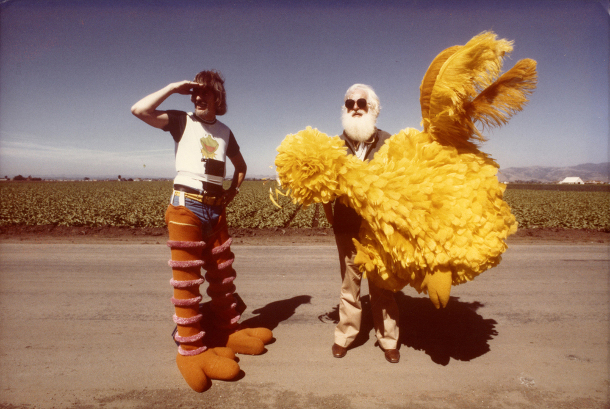Ten (2002)
Cast: Mania Akbari, Amin Maher, Kamran Adl
Director: Abbas Kiarostami
Country: Iran | France
Genre: Drama
Following his first experience, or experiment, with filming in digital with ABC Africa (2001), Abbas Kiarostami found another variable with which to explore and push the limitations of cinema and the boundaries between documentary and fiction. Ten consists of ten scenes shot with two digital cameras placed on either side of a car dashboard to show the driver and passenger. The scenes revolve around conversations between the driver, a young woman (Mania Akbari), and her individual passengers: her eight-year-old son (played by Akbari’s real son); her sister; an old woman; a prostitute; and a couple of her friends. Under the guise of the digital camera’s surface simplicity, Kiarostami accomplishes two things simultaneously: utilises and draws out the unique quality of intimacy, practicality, and register of performance that a digital camera affords; and addresses a complex range of sociopolitical issues through the lens of female experiences in Iran. Ten is thus a fascinating, open-ended work consistent with Kiarostami’s ever-probing cinema where direction, performance, and spectatorship are on a par with each other in co-creating the film.
Ten consists of ten scenes shot with two digital cameras placed on either side of a car dashboard to show the driver and passenger.
Each of the ten scenes is presented by the number in which it appears in the film, in reverse order. The tenth, and opening, scene with the driver’s son is the most extended and also establishes the principal relationship in the film, insofar as four of the ten scenes are with the driver and her son. This opening scene is also the most volatile. The mother and son do not exactly present the most loving, endearing conversation. As it progresses, we discover that she had divorced his father and remarried another man. They continually speak over each other over this subject: he throws insulting retorts about not accepting what she had done and the selfishness that motivated it; unfazed by his insolence, she expresses her desires to be free and loved, to feel right and not guilty to have gotten divorced, and to not be confined by the logic of female self-sacrifice. The points of view represented by mother and son are clear, which are ultimately two sides of the same coin: lack of women’s rights in Iran (which she states at one point) and masculinist narrow thinking when it comes to what women can do and be, made all the more disturbing coming from a boy. The force of these themes is all the more potent due to the scene’s improvisatory feel, and the fact that the focus of the camera is the boy in one take. Despite our view being confined to the boy, the nature of the mother-son conversation constructs a world and plunges us immediately into it. Another conversation in a later scene consists of an exchange of jabs, especially when they talk about a new wife for his father. She lists characteristics of the ‘perfect’ wife, i.e., confined at home, cooking all the time, and full obedience to the man, and he responds, ‘You don’t know what a mother is.’
The palpability of this world-inside-a-car is buoyed by the fact that the car itself is in contact with an actual world, its movement registering actual streets and neighbourhoods glimpsed through the window as the driver and her passenger converses. The interpretation and perspective of this world change depending on the passenger in question. Illustrative of this last point are the only two characters to whom the driver gives a ride and who are strangers to her: an old lady on her way to a mausoleum to pray and a prostitute, the proverbial contrasting of the Madonna and whore in terms of female tropes. (Significantly, they are the only ones whose faces we never see.) These two characters, though unseen, actually provide the template of conversation that the driver has with a couple of her female friends as well as her sister: prayer, love, and romantic relationships.
In fact, the film’s most touching scene is the second conversation with a friend whose boyfriend was full of contradictions and hesitation and now will not marry her because of someone else. The friend is tearful and quiet in her pain, yet conveys so much emotion when she reveals a change in her appearance. The scene is characterised by its understatedness, which serves as a contrast not only to the opening scene’s poignancy by virtue of its explicitness but also to another scene with a friend who sobs loudly because a guy has left her. Unlike the driver’s conversations with her son, the three separate conversations with her friends are marked by a vulnerability found nowhere else in the film. As a whole, then, the film presents a range of feelings that dialogue with the driver’s own experiences and point of view.
The palpability of this world-inside-a-car is buoyed by the fact that the car itself is in contact with an actual world, its movement registering actual streets and neighbourhoods …
What makes Kiarostami’s choice to have the film take place inside a car even more effective is the inclusion of moments that take the driver out of the car and into that actual world or engage with it: by yelling across the street to her ex-husband, who is himself ensconced in his car in the background and so cannot be seen properly, when she picks up her son from him; by going out of the car, her movements seen through the rear windshield and passenger window; by speaking to other drivers on the streets, while moving or looking for a parking place. In this sense, each scene, each conversation, each ride is a building block towards the construction of the social world in which all of the characters live, but asking us to consider it and engage with it ourselves from her point of view, given that she is in the driver’s seat, literally and figuratively.
Each scene, each conversation, each ride is a building block towards the construction of the social world in which all of the characters live, but asking us to consider it and engage with it ourselves.




